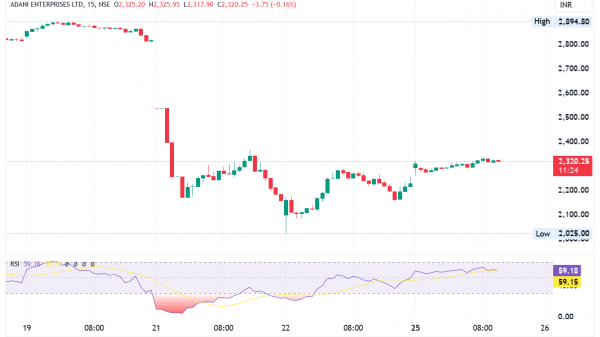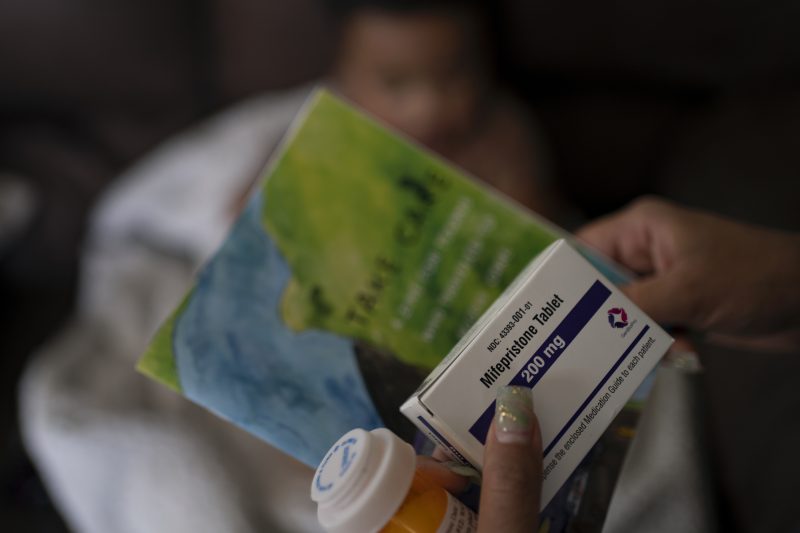People seeking a medication abortion sometimes struggle to find accurate and unbiased information about what to expect from the process, especially those living in states with abortion bans.
Women interviewed by The Washington Post described frantically Googling for hours to find sources they could trust on the subject, struggling to reconcile stories describing the pills as highly dangerous or deadly — false claims circulated by the antiabortion movement — with others depicting the process as straightforward and easy to handle on your own.
The Post interviewed doctors and several leading researchers who study the safety of medication abortion, as well as over a dozen women who recently ended their pregnancies with pills. These takeaways are based on information from licensed medical providers, as well as the experiences of women who shared their stories.
Here’s what to know about the experience of having a medication abortion:
***
Someone undergoing a medication abortion first takes a single pill of mifepristone, which blocks the hormone progesterone and stops the pregnancy from growing. About 24 hours later, they will take a four-pill dose of misoprostol to prompt contractions that push out the embryo or fetus. People further along in pregnancy sometimes need to take multiple doses of misoprostol.
Misoprostol can also be used on its own to terminate a pregnancy. That option, used widely around the world, is also highly effective but causes significantly more cramping and bleeding.
Abortion pills essentially prompt the body to have a miscarriage, a process that women often experience naturally at home on their own. The two-step regimen of mifepristone and misoprostol was approved over two decades ago by the U.S. Food and Drug Administration, which now endorses providers’ prescribing the pills through 10 weeks of pregnancy. Leading medical associations, including the American College of Obstetricians and Gynecologists, agree that the medications are safe, even when taken without first having an ultrasound or meeting with a doctor in person. Serious adverse events — prompting a blood transfusion, major surgery or an overnight hospital stay — occur in fewer than 0.5 percent of cases.
Studies show it’s also safe to have a “self-managed” abortion, or end a pregnancy yourself, using pills obtained outside a formal medical setting.
“The published research we have about self-managed abortion shows both effectiveness and safety outcomes are pretty similar to what we see in the clinical trials,” said Daniel Grossman, an OB/GYN and professor at the University of California at San Francisco.
Some people who take abortion pills experience little more than the bleeding and sharp cramping of an unusually heavy period. For others, the pain can be intense, with the level varying based on pain tolerance and overall comfort with the situation, doctors said, as well as how far into pregnancy the patient is when they take the pills.
People taking abortion pills also often experience chills, fever, nausea, vomiting, diarrhea and dizziness — symptoms that usually occur an hour or more after the patient takes the misoprostol. Most women interviewed sat on the toilet during much of the process, experiencing the sensation of needing to push something out of their body.
The size of the blood clots and pieces of tissue that pass during a medication abortion also varies significantly depending on how far a patient is into their pregnancy. By 11 or 12 weeks, the patient is more likely to pass a recognizable fetus, which at that point would be about the size of a lime.
Some pregnancy tissue and blood clots will occasionally remain in the uterus for days or sometimes weeks after a medication abortion, which can cause residual bleeding. This is typically not indicative of a problem, doctors said — most of the time, the body will expel the remaining tissue on its own. Some patients choose to take another dose of misoprostol, while others seek in-person medical care for a procedure to complete the abortion.
A medication abortion will fail to terminate a pregnancy in approximately 3 to 5 percent of cases when taken within the first 10 weeks of pregnancy.
Complications are rare but they do happen. Doctors often encourage patients to seek medical care if:
They are experiencing sustained, extremely heavy bleeding. The general rule of thumb is for a patient to seek in-person care if they are soaking more than two full-size sanitary pads per hour for two consecutive hours, or feeling extremely lightheaded or dizzy.They have foul-smelling vaginal discharge. This could be a sign of an infection.They have a sustained fever (over 100.4 degrees Fahrenheit) 24 hours or more after taking the medication, or a high fever (more than 101 degrees Fahrenheit) for a shorter period. This could also be a sign of an infection.They experience no bleeding within 24 to 48 hours after taking the pills. This could signal that the patient has an ectopic pregnancy, a highly dangerous condition in which the pregnancy implants outside the uterus.They have severe abdominal pain that is not responsive to pain medications. This could be a sign of an ectopic pregnancy or an infection.
Many patients in states with abortion bans are scared to go to the hospital after they take abortion pills. Nisha Verma, an OB/GYN in Georgia, says that when speaking with people self-managing their abortions, she makes sure they know that the symptoms for a miscarriage and a medication abortion are indistinguishable.
“It’s important for people to know there’s no way for a doctor to know they self-managed,” Verma said. The one exception is when people take the pills vaginally, she added. In those cases, there may be residue from the pills left behind in the vagina.
There have been no major U.S.-based studies on the experience of self-managing an abortion with pills beyond 11 weeks of pregnancy. International research suggests that the process is still safe, said Grossman, but more often requires additional medical care. One study conducted with patients in Argentina, Nigeria and Southeast Asia between nine and 16 weeks of pregnancy found that 24 percent went to a medical facility during or after the experience of taking the pills at home. Fewer than 10 percent required medical intervention to complete the abortion or treat a complication.
The process can be physically and emotionally difficult. People who self-manage their abortions with pills beyond 12 or 13 weeks of pregnancy typically experience more-intense cramps, followed by a gush of fluid, which is their water breaking. At 12 to 14 weeks, the fetus is 2 to 3.5 inches long and has identifiable features. After 15 weeks of pregnancy, the patient can sometimes struggle to pass the placenta.
Abortion bans explicitly do not allow people seeking abortions to face criminal penalties. Instead, the laws target doctors and others involved in facilitating an abortion. In many states, the penalty for violating the abortion ban is at least several years in prison.
Prosecutors have used laws other than abortion bans to charge women who have self-managed their abortions. These situations often involve abortions induced later in pregnancy, or cases in which the woman tries to dispose of the fetus.
The World Health Organization says the pills are safe to take through 12 weeks of pregnancy, several weeks beyond the FDA limit, and published research demonstrates that the process is generally safe even after that point. Because the FDA controls only the labels on the medication, and can’t dictate how a physician chooses to practice, some licensed providers in the United States prescribe the pill beyond 10 weeks of pregnancy.
Restrictions on abortion pills vary across the country. Some states where abortion is legal have their own laws about how mifepristone can be used — mandating that the pills cannot be prescribed by anyone other than a licensed physician, or that they need to be taken under medical supervision.


































